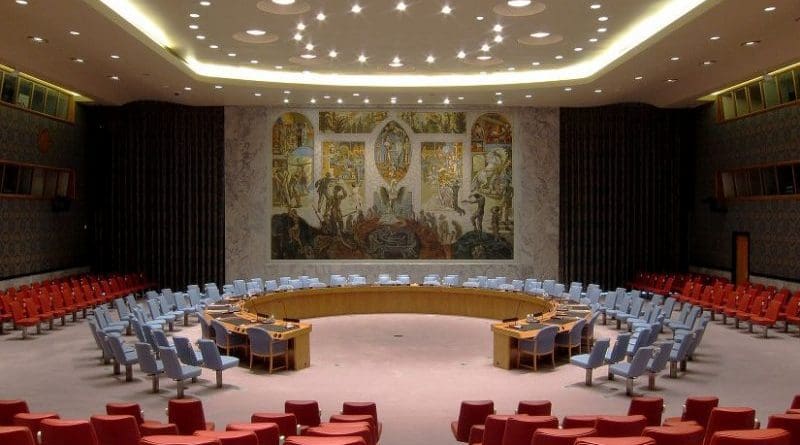Responsibility To Protect: Quo Vadis? – Analysis
By IPCS
By John Schabedoth*
The concept of responsibility to protect (R2P) intends limit state sovereignty in favour of a more effective protection of human rights. It does not have a legal effect that goes beyond the existing norms of public international law (PIL). Rather, the strengths of R2P lies in its call to use the already existing legal possibilities for interventions under the UN Charter more frequently.
The concept of R2P emerged in light of the UN not being able to prevent many humanitarian crises in the 1990s (e.g. the genocide in Rwanda). It was meant to reconcile the peacekeeping norms of the UN Charter that prohibit the use of force and interventions with the increased need for an effective protection of human rights. At the same time, the concept should end the legally and politically highly controversial practice of military humanitarian interventions by individual or several states without the explicit authorisation by a UN resolution.
At the 2005 UN World Summit, the concept was politically confirmed by the international community, i.e. states. According to the adopted resolution, every state has the responsibility to protect its population from genocide, war crimes, ethnic cleansing and crimes against humanity. If a state does not comply with this responsibility, it forfeits its sovereignty. In this case, the responsibility to protect is transferred to the state community, which fulfils it by diplomatic, political, economic, humanitarian, and ultimately, military measures.
With regard to the legally binding effect of the R2P concept, one has to distinguish between the responsibility of each state for its own population and the shared responsibility of the global community for the population of one particular state.
The responsibility of states to protect their own populations from the most serious human rights violations has been part of PIL for a long time. The novelty of R2P is the implication that this responsibility can be shifted to the state community. Even today, a legal framework exists that enables the Security Council to act in cases of grave human rights violations on a large scale. However the R2P concept implies a duty to act in these cases. This contradicts with the current practice of veto powers that exercise their veto right in their own political discretion.
A responsibility to protect of the state community for the population of a particular state is not part of PIL. The 2005 UN World Summit Resolution did not have any legally binding effect.
However, binding PIL can also be created by customary law, if a general practice exists that the states accept as law. In 2011, when the UN Security Council authorised a military intervention in the Libyan Civil War, it was the first time protection of civilian population was used in the reasoning. In the resolution, the Security Council stressed the responsibility of the Libyan authorities for the protection of the Libyan population. However the resolution neither explicitly mentioned a transfer of this responsibility to the state community nor the concept of R2P in general. The UN Security Council rather reasoned the intervention with the established legal norms of Chapter VII of the UN Charter.
In the resolution on the use of chemical weapons in the Syrian Civil War, the Security Council did not refer to a violation of Syria’s R2P but to already existing international legal norms concerning the protection of its population. Therefore, a responsibility of the state community to protect the population of another state is not a legal obligation that affects the discretionary nature of exercising the Security Council member’s respective voting right.
The Syrian case in particular shows the blurriness of R2P, which makes it hardly suitable for an application in a specific case: It is unclear who examines the facts to which the concept is applied to.
It is also open whether the responsibility to protect is actually an obligation to intervene and if so, in which form, by whom and with what military and political objectives. The proposals range from civilian aid measures to military interventions including regime change. Whether the need for intervention by the Security Council exists in a conflict, and if so in favour of whom and in what form, seems to depend strongly on the result of a political analysis of the circumstances and a future forecast of the further development of the conflict. Such an analysis can hardly be regulated by law.
Political interests and values are different within the state community. Therefore it is questionable whether a shared responsibility to protect will become a legal concept in the near future, especially since a large part of the “Global South” but also countries like the US are critical of the concept.
The concept of R2P does not solve the tension between human rights and the prohibition of use of force. Nevertheless, R2P has a future as a political concept: though the intervention of the Security Council in domestic conflicts was legal before the development of the R2P concept, it was often politically highly controversial. The R2P concept reinforces the “authority” of intervening measures by the Security Council. The focus is no longer on the question of whether or not to intervene, but on how the state community can fulfil their R2P. This increases the diplomatic and political pressure on members of the Security Council to use the existing legal possibilities for interventions more frequently.
The discretion enjoyed by the states with veto powers to use their voting rights could be politically restricted by a “behavioural expectation” shared by the veto powers. In particular, it should be noted that the R2P concept is by no means confined to military measures. In fact there are numerous peaceful, effective but less controversial measures to fulfil the states’ R2P. The community of states should focus on elaborating them and to apply them, where possible, on humanitarian crises of the future.
* John Schabedoth
Research Intern, IReS, IPCS

